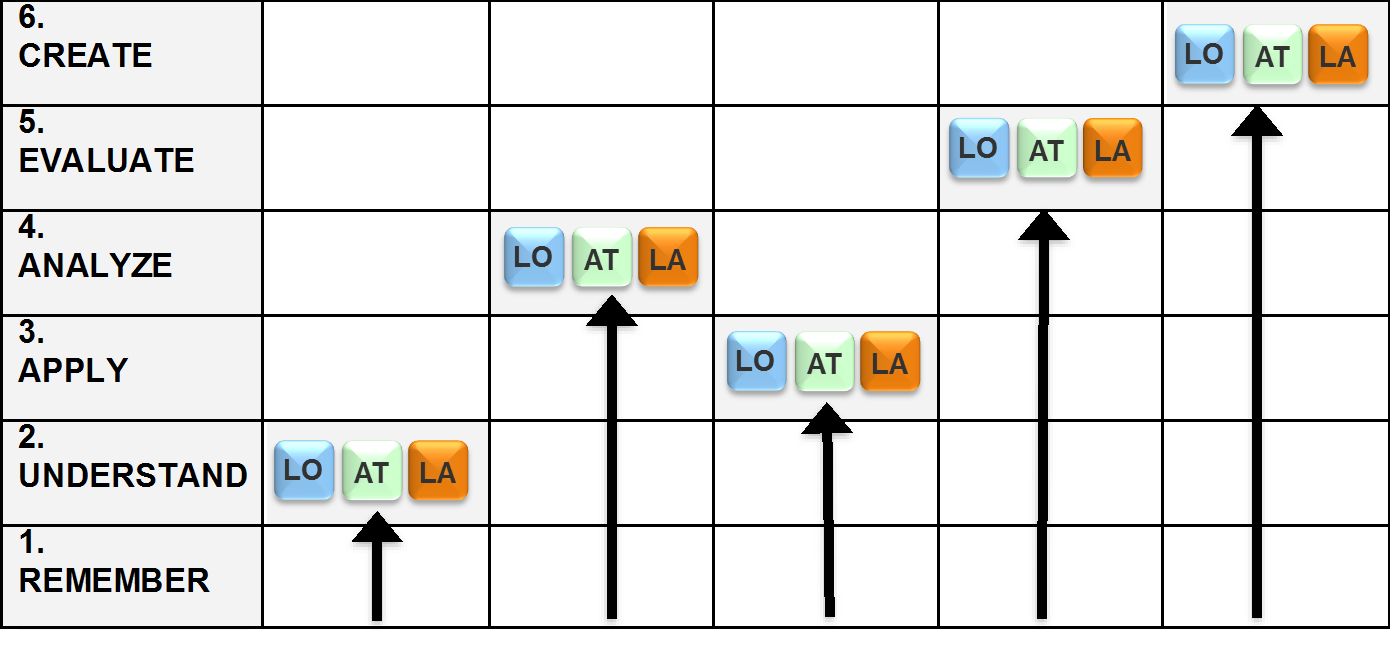Constructive Alignment
After the objectives of the course have been clearly formulated and assigned to their respective levels in a taxonomy, the scenario for checking whether these course objectives have been reached can be planned. This scenario will involve exercises and tasks, working and test situations and all activities during which students demonstrate that they have achieved the learning objectives, thereby demonstrating learning success. As a teacher you can, via fair assessment and grading and personal feedback, then provide students with a critical, constructive analysis of their personal learning processes.
Feedback from the teacher should ideally prepare students for the examination and ensure sustainable learning processes during teaching. Numerous studies show just how central faculty feedback is for student performance. Such interaction between teaching staff and students during supervision and performance assessment is therefore a main focus of competence-oriented university teaching, and is explicitly fostered at ETH Zurich.
In this context it must be ensured that learning objectives, performance assessments (situations where student performance is measured) and feedback in the framework of learning activities all show the same level of complexity. This means that a learning objective involving the application of acquired knowledge can only be correctly measured in a situation where students actually demonstrate transfer of knowledge. Learning objectives, performance assessments and learning activities must therefore be adjusted and aligned.

Teaching fulfils the criteria of Downloadconstructive alignment (PDF, 151 KB)vertical_align_bottom if
- learning objectives are competence-oriented and communicated in advance;
- performance assessments measure students' achievement of learning objectives (competences);
- learning activities comprise tasks, planned in advance, which help students to achieve the learning objectives (acquire competences).
Good teaching preparation enables you to create an optimal learning environment where it is always clear what your goals are and what helpful materials are available (even outside the classroom), and where. This spares you work during the semester. You will also be able to consistently align learning activities and examinations with your objectives.
Because we find the latter point especially important, we have developed a pragmatic procedure to improve alignment. Here we move from learning objectives to the examination in six steps, as follows:

